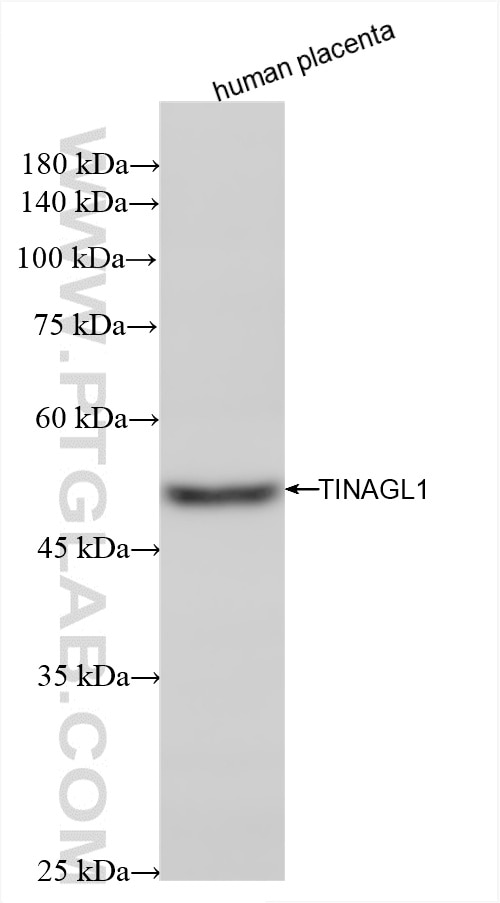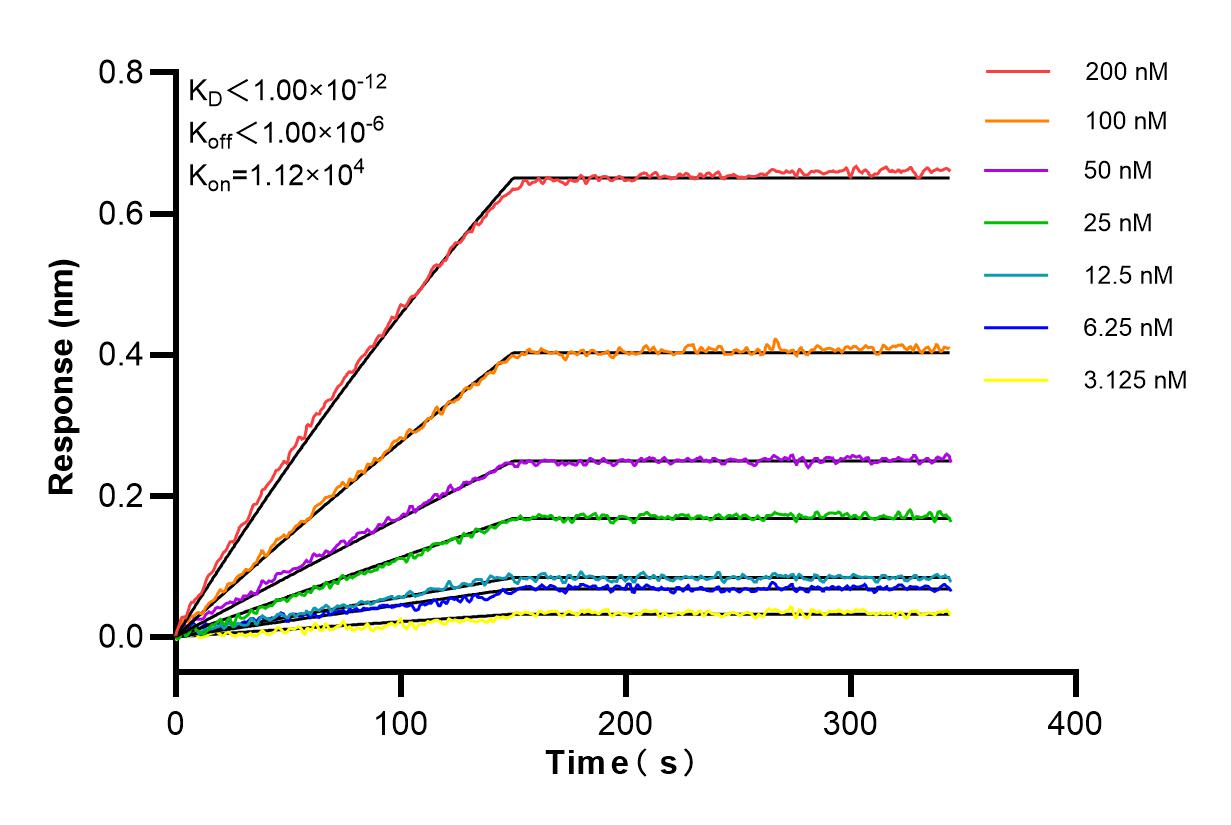Tested Applications
| Positive WB detected in | human placenta tissue |
Recommended dilution
| Application | Dilution |
|---|---|
| Western Blot (WB) | WB : 1:1000-1:4000 |
| It is recommended that this reagent should be titrated in each testing system to obtain optimal results. | |
| Sample-dependent, Check data in validation data gallery. | |
Product Information
85140-2-RR targets TINAGL1 in WB, ELISA applications and shows reactivity with human samples.
| Tested Reactivity | human |
| Host / Isotype | Rabbit / IgG |
| Class | Recombinant |
| Type | Antibody |
| Immunogen | TINAGL1 fusion protein Ag2721 Predict reactive species |
| Full Name | tubulointerstitial nephritis antigen-like 1 |
| Calculated Molecular Weight | 467 aa, 52 kDa |
| Observed Molecular Weight | 52 kDa |
| GenBank Accession Number | BC009048 |
| Gene Symbol | TINAGL1 |
| Gene ID (NCBI) | 64129 |
| Conjugate | Unconjugated |
| Form | Liquid |
| Purification Method | Protein A purification |
| UNIPROT ID | Q9GZM7 |
| Storage Buffer | PBS with 0.02% sodium azide and 50% glycerol, pH 7.3. |
| Storage Conditions | Store at -20°C. Stable for one year after shipment. Aliquoting is unnecessary for -20oC storage. 20ul sizes contain 0.1% BSA. |
Background Information
Tubulointerstitial nephritis antigen-like 1 (Tinagl1), a secreted extracellular protein, was initially identified as a putative component of the ECM. Tinagl1 is most commonly associated with embryonic development, including the heart and adrenal glands. Low levels of Tinagl1 expression can be dire for craniofacial development and for female fertility.
Protocols
| Product Specific Protocols | |
|---|---|
| WB protocol for TINAGL1 antibody 85140-2-RR | Download protocol |
| Standard Protocols | |
|---|---|
| Click here to view our Standard Protocols |





